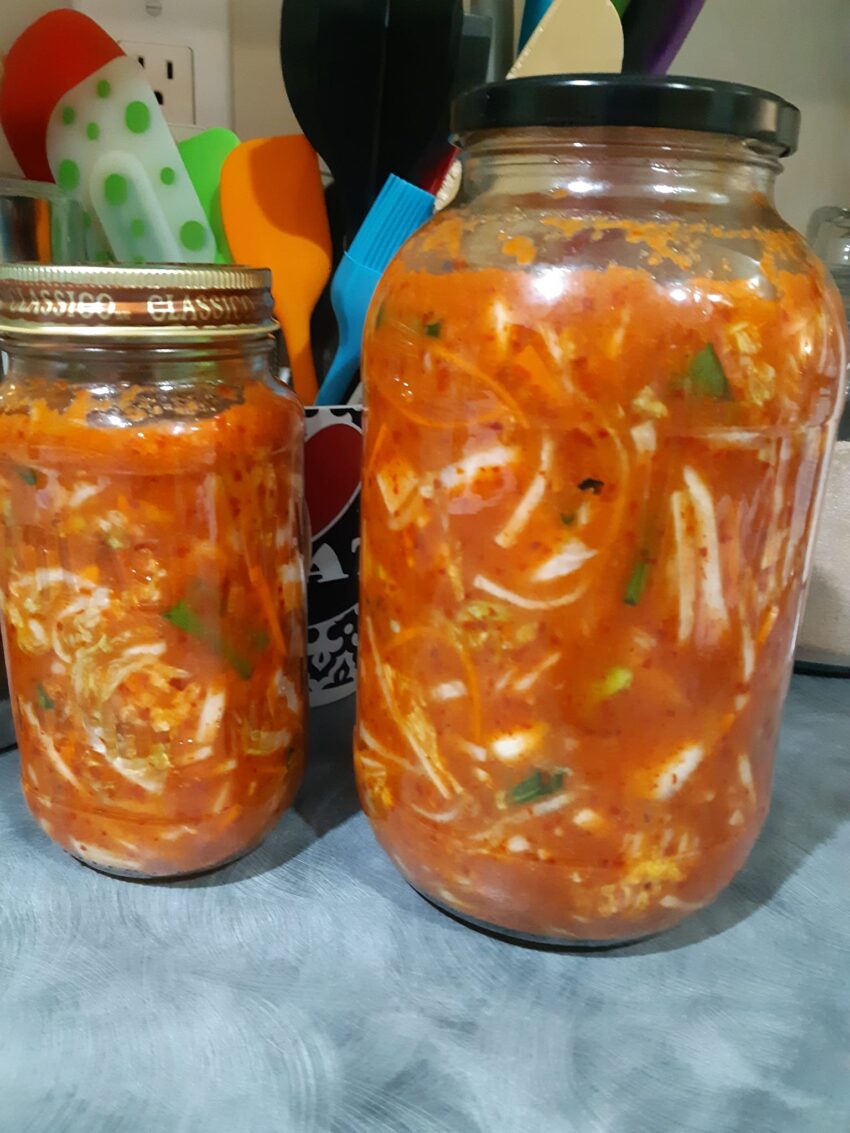Kimchi, a cornerstone of Korean cuisine, is a vibrant testament to the art of fermentation. The rich interplay of spicy Korean red pepper flakes, pungent garlic, and tangy fish sauce creates a symphony of flavors that dance across the palate. As the Napa cabbage and vegetables transform through fermentation, they develop a complex depth of flavor that melds the heat of chili with the umami of fermented fish. This kimchi not only complements a wide array of dishes but also serves as a nutritional powerhouse, offering probiotics that support digestive health. Crafting your own kimchi at home allows you to tailor the spice and seasoning to your taste, ensuring a fresh, zesty condiment that embodies the essence of Korean culinary tradition.
Ingredients
- 1 medium Napa cabbage (about 2 pounds)
- 1/4 cup sea salt
- 4 cups water (for soaking)
- 1 tablespoon grated ginger
- 4 cloves garlic, minced
- 1 tablespoon sugar
- 3 tablespoons fish sauce (or soy sauce for a vegetarian option)
- 2 tablespoons Korean red pepper flakes (gochugaru, adjust to taste)
- 4 green onions, chopped
- 1 small daikon radish, peeled and julienned
- 1 small carrot, peeled and julienned
- 1/2 pear or apple, peeled and grated (optional, for sweetness)
Instructions
- Prepare the Cabbage:
- Cut the Napa cabbage in half lengthwise and then into quarters. Remove the core and cut each quarter into bite-sized pieces.
- Dissolve the sea salt in 4 cups of water in a large bowl. Submerge the cabbage pieces in the salted water, pressing them down with a plate or heavy object to keep them submerged. Leave the cabbage to soak for 2 hours, turning occasionally.
- Prepare the Kimchi Paste:
- While the cabbage is soaking, combine the grated ginger, minced garlic, sugar, fish sauce (or soy sauce), and Korean red pepper flakes in a bowl. Mix well until a smooth paste forms.
- Prepare Vegetables:
- After 2 hours, drain the cabbage thoroughly and rinse it under cold running water to remove excess salt. Squeeze out excess water from the cabbage and transfer it to a large mixing bowl.
- Add the chopped green onions, julienned daikon radish, julienned carrot, and grated pear or apple (if using) to the bowl with the cabbage.
- Mix the Kimchi:
- Add the kimchi paste to the bowl with the vegetables and cabbage. Use your hands (wearing gloves to avoid irritation from the chili flakes) to mix everything thoroughly, making sure the paste coats all the vegetables evenly.
- Pack the Kimchi:
- Transfer the mixed kimchi into a clean, airtight jar or container. Pack it down tightly to minimize air pockets, leaving about an inch of space at the top.
- Ferment the Kimchi:
- Seal the jar or container with a lid. Leave it at room temperature for about 1-2 days to begin fermentation. The exact time will depend on the ambient temperature and your taste preference. You should see bubbles and notice a tangy smell.
- Refrigerate:
- After the initial fermentation period, move the kimchi to the refrigerator. It will continue to ferment slowly in the fridge and develop more complex flavors over time. Kimchi is usually best after about a week in the refrigerator.
